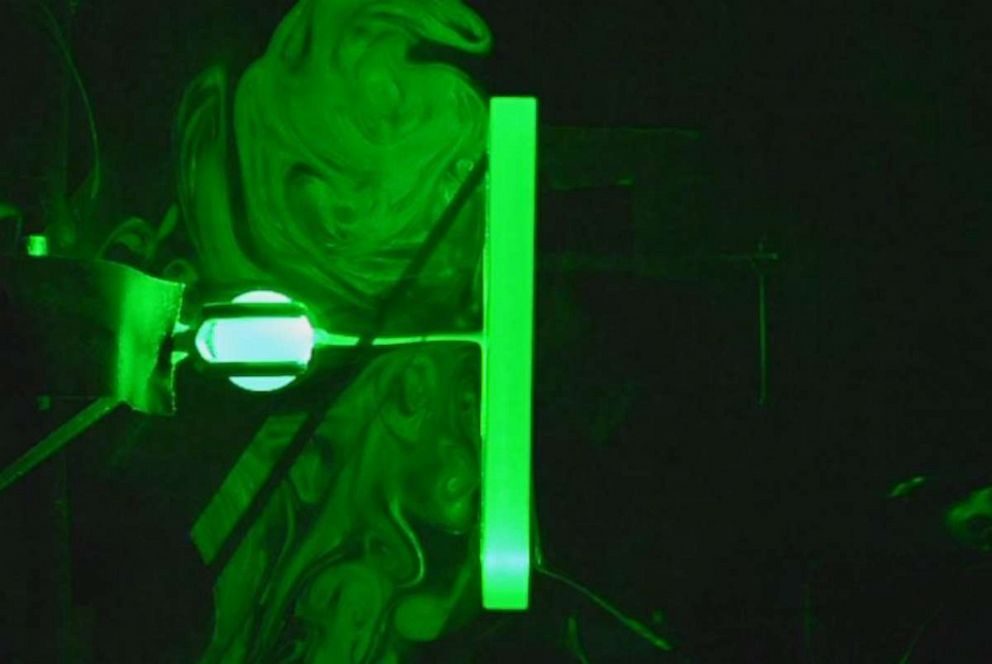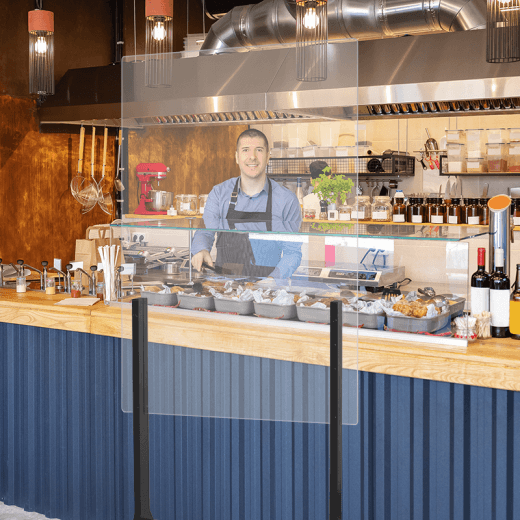Some might argue 2020 was the year of sneeze guards, but the invention has actually been around since the 1950s. A Midwest restauranteur and self-admitted germaphobe, Johnny Garneau, filed a patent in 1959 for an invention he called “The Food Service Table.”
Garneau owned a buffet-style restaurant and wanted to keep people from breathing or sneezing on food as they walked through the line and chose items for their plates. The invention was eventually renamed the “sneeze guard” and was the basis for the Food & Drug Administration (FDA) eventually making sneeze guards mandatory for buffets in its food code.

Today, in response to the pandemic, restaurant sneeze guards are far more ubiquitous. We see them in all types of restaurants, gyms, stores and in many other retail environments. Currently, researchers are examining how much an acrylic sneeze guard, along with other safety precautions, can help prevent the spread of viruses.
Here’s a look at some of what researchers are finding and why health and safety agencies are also recommending their use.
Princeton, University of Central Florida weigh in
A recent study from Princeton University researcher and engineering professor, Howard Stone, involved testing sneeze guard barriers typically found in commercial settings for their ability to slow or stop strong forces of air, similar to the human breath or the powerful force of a sneeze they may encounter in a restaurant or retail store.
Stone used a Halloween fog machine to propel smoke directly into a sneeze guard. As expected, some of the smoke found its way around the barrier, but that’s not a bad thing in a well-ventilated building, he said.

“When it gets around, it’s starting to mix with the outside air – that’s good, that’s a protective measure because it dilutes the concentration of anything that you exhale,” he told a New Jersey newspaper.
Research from the University of Central Florida (UCF) into potentially developing a cough drop to prevent virus super spread also revealed some facts about how our breath interacts with a building’s HVAC system and carries contaminants around an environment. While there are certainly negatives to this, the effectiveness of the ventilation system is key, UCF researcher and engineering professor Michael Kinzel said. The more the HVAC system recirculates the air with outside fresh air, the safer the environment can be.
Safety agency recommendations
Despite the need for more evidence on how much sneeze guards help prevent virus spread, numerous health agencies still recommend using them in a variety of situations, along with other preventive measures. Sneeze guards are not the sole solution, researchers say, but a part of the overall approach to minimizing the spread of illnesses. They’re an effective complement to frequent cleaning, hand washing, and wearing a mask.
The CDC, for example, in its guidance for airport retail, food, and restaurant workers suggests employees and patrons try to maintain a six-foot distance from others, maintain cleanliness protocols and minimize touching cash and credit cards. But it also suggests to “place a barrier (e.g., sneeze guard) between employees and customers.”

The Occupational Safety and Health Administration (OSHA), in its 32-page guidance on preparing workplaces to reopen after the early 2020 shutdown, suggests a combination of control measures, including “installing physical barriers, such as clear plastic sneeze guards” in its section on “Workplace Controls.” And just as was mentioned in the Princeton and University of Central Florida research, OSHA also recommends increasing ventilation as much as possible.
In Canada, the Canadian National Collaborating Centre for Environmental Health (NCCEH) recommends partitions in commercial environments, and even more explicitly talks about a sneeze guard’s actual role in influencing human behavior in a store as well. The agency even includes best practices for installing acrylic partitions and design suggestions to accommodate for human behavior and tendencies.
According to the NCCEH: “Partitions are proposed to serve three critical functions: 1) intercepting the respiratory droplets that are thought to transmit the virus, 2) re-enforcing physical distancing requirements, even when users are unwilling or forgetful; and 3) reducing reliance on masks, both due to the shortage of these items and user comfort.”
Using sneeze guards can also work to support a positive perception of your retail business. In the U.S., a 2020 report from Industrial Safety & Hygiene News (ISHN) said that having the acrylic sneeze guards in place demonstrated an organization’s commitment to safety and the partitions served to remind people of social distancing and to take necessary precautions.
“Sneeze guards are not medical devices, but they have PPE qualities contributing to transmission slowdown – even if a customer and employee aren’t wearing masks,” the report noted.
Conclusion
On the fence about whether to purchase sneeze guards for your retail space? There are a lot of different types and styles to choose from. Let a professional from ShopPOPdisplays help you choose the right ones to promote safety and an enjoyable retail experience in your store. In addition to other critical public health measures such as frequent hand-washing and mask-wearing, sneeze guards have been around since the 1950s and are a proven tool to help us all stay healthy and safe.

